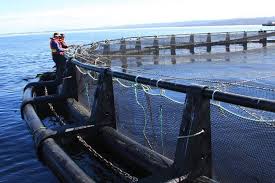Salmon and oysters drive Australian growth

SALMON and oysters are the main drivers behind Australia’s impressive growth in fish farming, says report from EUMOFA, the European Market Observatory for Fisheries and Aquaculture.
In 2008-09, the sector was producing just over 70,000 tonnes of farmed fish. By 2015-16, the last year for which figures are available, that total had risen to 97,000 tonnes.
Although a long way from the northern hemisphere, Australia’s aquaculture companies are using Atlantic salmon for their breeding, plus a limited amount of rainbow trout.
But the report says that, as in other parts of the world, trout production has declined in recent years. Salmon now accounts for 60 per cent of all aquaculture activity.
EUMOFA says: ‘Oysters are the second most important aquaculture sector in Australia, including both the culture of oysters for food utilisation, and for the production of pearls.
‘Moreover, both tuna and prawns rank among the top farmed species. While the value of prawn production has seen an increase over the past seven years, that for tuna fattening has been stagnating.’
Salmon production mainly takes place in Tasmania, accounting for 30 per cent of output, while other species are specific to various states.
The tuna fattening sites are located in Southern Australia, barramundi and shrimp operations are primarily located in Queensland, and New South Wales, Southern Australia and Tasmania are all home to edible oyster farming, while the farming of abalone and blue mussels is carried out along the southern coastline.
Vietnam is the main destination for Australian seafood exports of all kinds, worth (Australian) $682 million a year, followed by Hong Kong at $224 million and Japan at $205 million.

